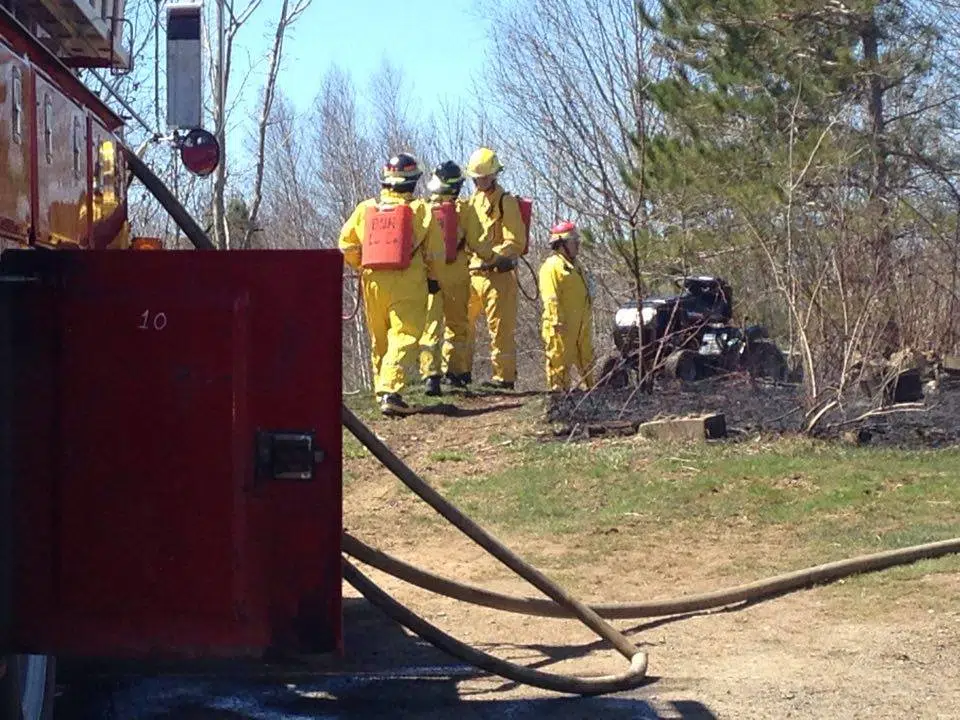
Firefighters monitor a grass fire in Lunenburg County. Photo: File Photo
With Springs arrival some people will be thinking about burning their grass in hopes of making it greener and lusher when it regrows.
Wildfire Prevention Officer Kara McCurdy says that many of the perceived benefits of burning your lawn are not true.
“When you burn your grass it can destroy the nutrients in the ground that help your lawn grow,” McCurdy says.
She says it also increases the spread of unwanted weeds and plants as seeds are dislodged during burning and root systems are exposed.
“It only appears greener in the few days after burning because of the contrast with the black scorching of the ground.”
Even if grass fires did what people think they do McCurdy still doesn’t think it’s worth the risk saying they can often spread to buildings and forests.
Last year’s forest fire season was around the provincial average of recent years but Lunenburg County saw a major uptick.
Since the Department of Forestry started releasing stats on the number of hectares burned in each county in 2014 Lunenburg County has had relatively calm seasons. From 2014 to 2019 the annual average of hectares burned by forest fires in Lunenburg County was 5.6. In 2020 Lunenburg County reported 46.75 hectares of land were burned by forest fires.
McCurdy says last year was somewhat unique as there were high drought conditions during the end of August that saw two major forest fires in Lunenburg County that made up around all of the hectares burned in the county.
This year she says the success of forest fire season will be in the hands of Nova Scotians, “In this province 99 per cent of fires can be traced back to humans as lighting strikes rarely cause fires in Nova Scotia.”
In order to have a successful season, she recommends heeding the Department of Lands and Forestry daily burn restrictions which are released each day around 2 p.m.







